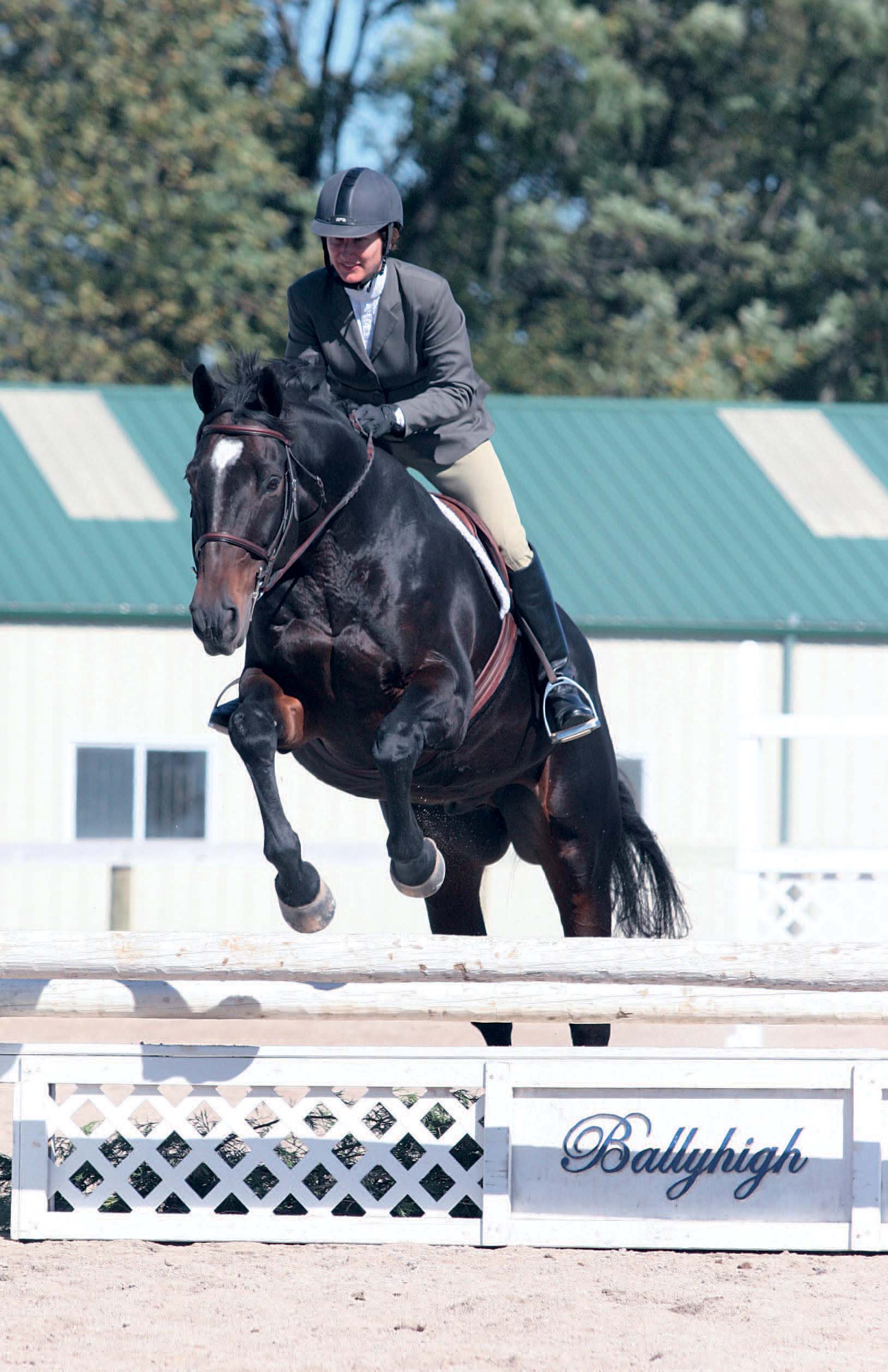


Hunter Courses
Show hunting originated as a leisure activity many generations ago, when people began to stack their field hunters against one another. The show courses simulate the types of jumps a hunter would encounter in the field. Therefore, the requirements of a good field hunter come into play in the show ring: manners are important because if you are foxhunting on an unruly horse, you can ruin the day for the rest of the riders. A horse with a comfortable gait is desired because a rough-gaited horse makes for an unpleasant ride. A horse that jumps safely is required because if you have a horse with a sloppy jumping style, he can hang a leg on the fence and cause his rider to take a tumble out on the hunt field.
Hunter Basics
To demonstrate these skills, hunters must answer the questions the course asks. For example, each change of direction must be conducted through a flying lead change to show that the horse is handy and balanced. The horse must hit the prescribed level of strides between jumps and ride them evenly and smoothly to demonstrate control. He must take the jump out of his stride, without swapping his leads or chipping in a short stride, to show he’s a safe jumper with a good style. All in all, the horse must show the judge a round that flows and meets each jump in stride, turning and jumping from a definite tempo and rhythm.
The misconception about riding hunters is that there is really no skill involved on the rider’s part. Many people assume the horse they are watching is a “packer,” meaning he is doing all the work, regardless of the rider’s skill. This is far from the truth. Although it’s correct to assume that riding hunters is a rather genteel activity, a great deal of skill is required to achieve that calm, smooth picture. The rider must show that she is in control throughout the round. Therefore, you must be able to judge your distance to each jump, aid the horse in keeping a steady rhythm, and know when to stay out of his way and when to help.
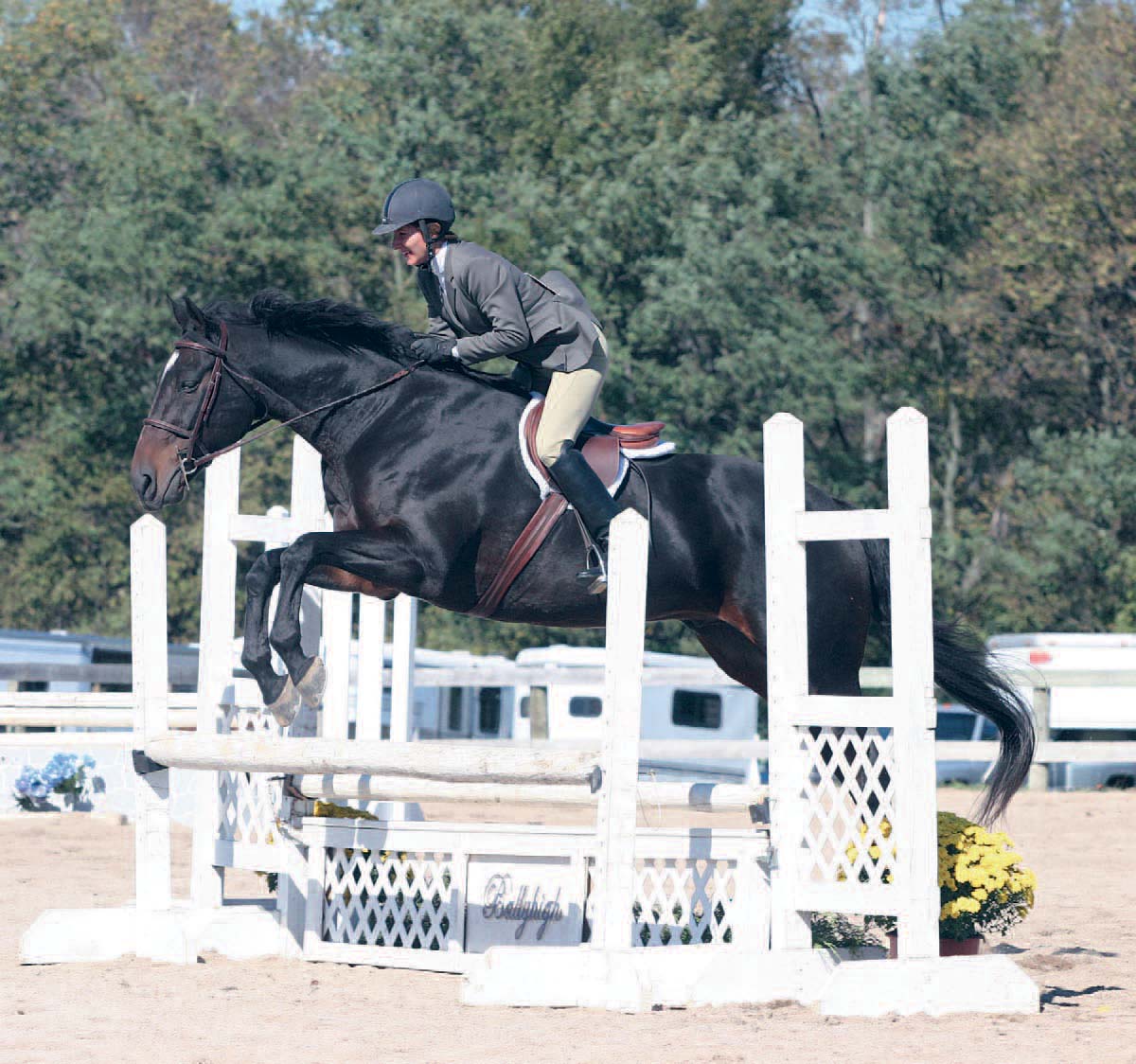
This pair exhibits the calm, smooth, controlled jump expected of hunters.
The judge wants to see that you have quiet, sensitive hands and that you aren’t relying on the bit for control, so you must keep a quiet contact on the bit between the fences. Over the fence, this contact is relinquished in a crest release, which encourages the horse to stretch his neck out and round himself over the fence to demonstrate that your horse is in perfect control. To do a crest release, place your hands halfway up the horse’s neck and on the crest. There should be a noticeable slack or loop in the reins. Equitation riders are different, and instead ride with a soft contact and have more of a following hand, with a straight line from the bit to the rider’s elbow, which is similar to a jumper or an event rider. This type of release is called an automatic release.
The hunt seat position, or the two-point position, is held both over the fence and on the flat. In the two-point, the hip angle is closed, and the seat bones are out of the saddle. The upper body is slightly ahead of the vertical, which allows you to stay close to the center of gravity. This position encourages the horse to stride forward, and if something goes wrong (say a horse has a deep takeoff spot), you will already be forward and so less likely to get left behind. Also, the two-point is a visual indication of a smooth ride. As the horse jumps there will be a slight closing of your hip angle.
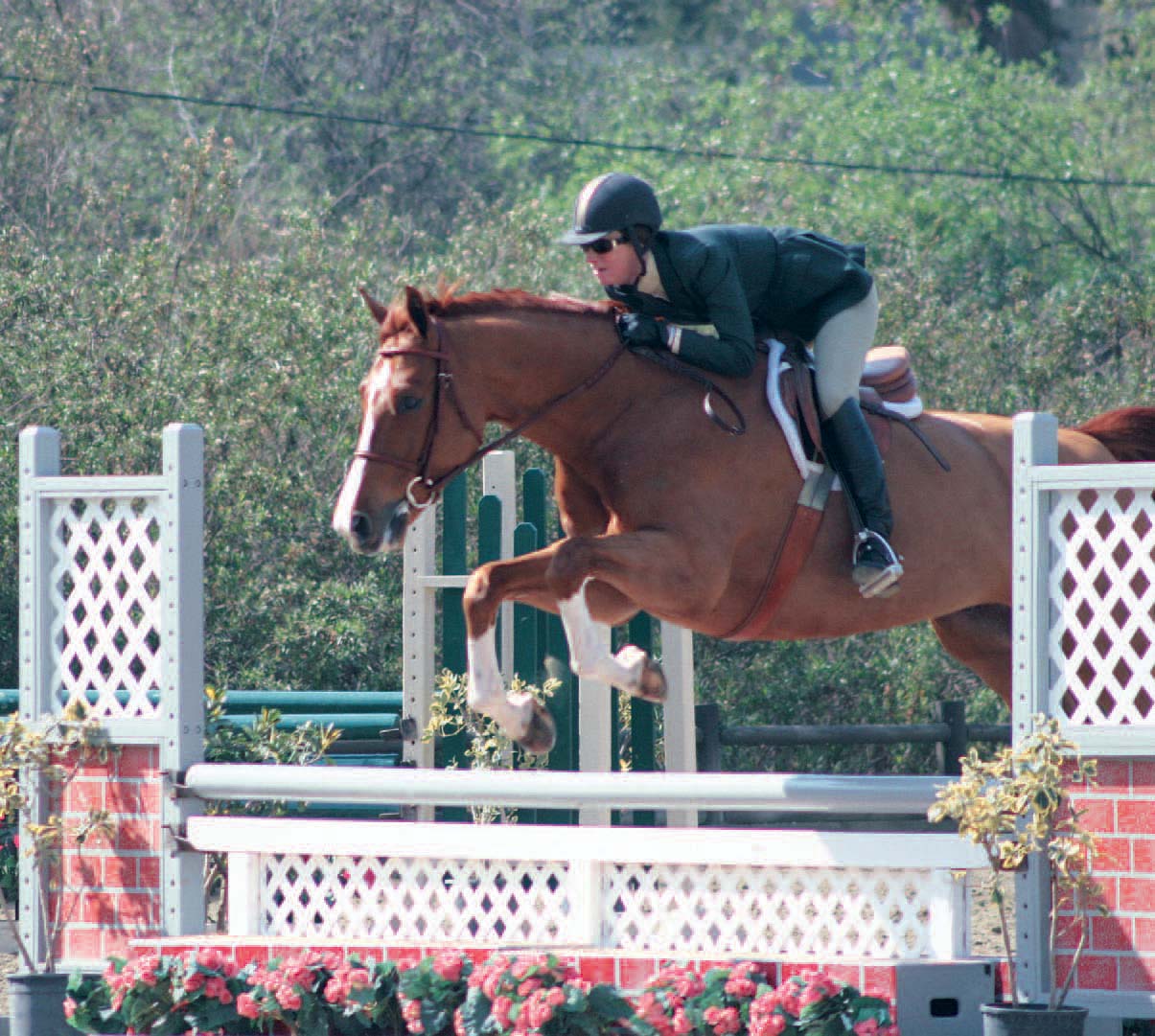
An equitation rider demonstrates the proper form for hunt seat: she keeps a two-point position over the jump but uses an automatic release instead of a crest release.
Hunter Fences
Hunter fences are not as complicated or as flashy as eventing and show jumping fences are. The two types of jumps found in hunter courses are verticals and oxers. In lower levels, jumps are usually entirely verticals. Oxers are normally first encountered in the two-foot, six-inch division. Combinations in all classes are ordinarily in and outs.
Verticals
The vertical is typically the first jump on the hunter course. In lines to related jumps, the first effort will be a vertical and the second an oxer. So, for instance, you’ll jump into a line over the vertical and canter five or six strides and jump out over an oxer. The vertical fence requires a deeper approach; otherwise, the horse will jump it flatly. This is something that riders often forget to address. Because they want their horses to be soft and flowing freely around the course, they become complacent when jumping the so-called easy, nondescript vertical.
To tune a horse to the vertical, place a ground pole about nine to ten feet in front of the jump (to make a type of bounce combination). Approach it in a working canter; ride over the pole and then over the jump. The pole will put the horse into a position where he has to rock back on his hocks, bring his front end under, and jump out over the vertical. This exercise will also help sharpen your approach to verticals.

An Appaloosa and rider jump a simple vertical.
One aspect of a good hunter is scope, the natural ability to jump a wide object. Oxers give the judge the perfect opportunity to evaluate this skill. One element seen on every course is the single oxer, set apart and jumped on a long approach. Here the judge is looking for the horse to stay on the same pace and not switch his lead. However, the lengthy approach has its own risks: For the rider, it’s easy to obsess about the jump and the perfect takeoff spot. For the horse, it’s easy to break the rhythm and waver off the line.
The key to riding oxers is to make sure you don’t take off from a long spot. If you leave from six feet in front of a four-foot-wide oxer, you may not make it to the other side. You don’t want your horse reaching the zenith of his arc over the middle of the oxer, with the dangerous potential of pulling the back rail or having your horse struggle and scramble in an effort to make it across. If, on the other hand, you find you are too deep to the oxer, soften your reins and add leg for more energy. Bottom line: stay out of the horse’s way, maintain a rhythm, and don’t overthink the takeoff.
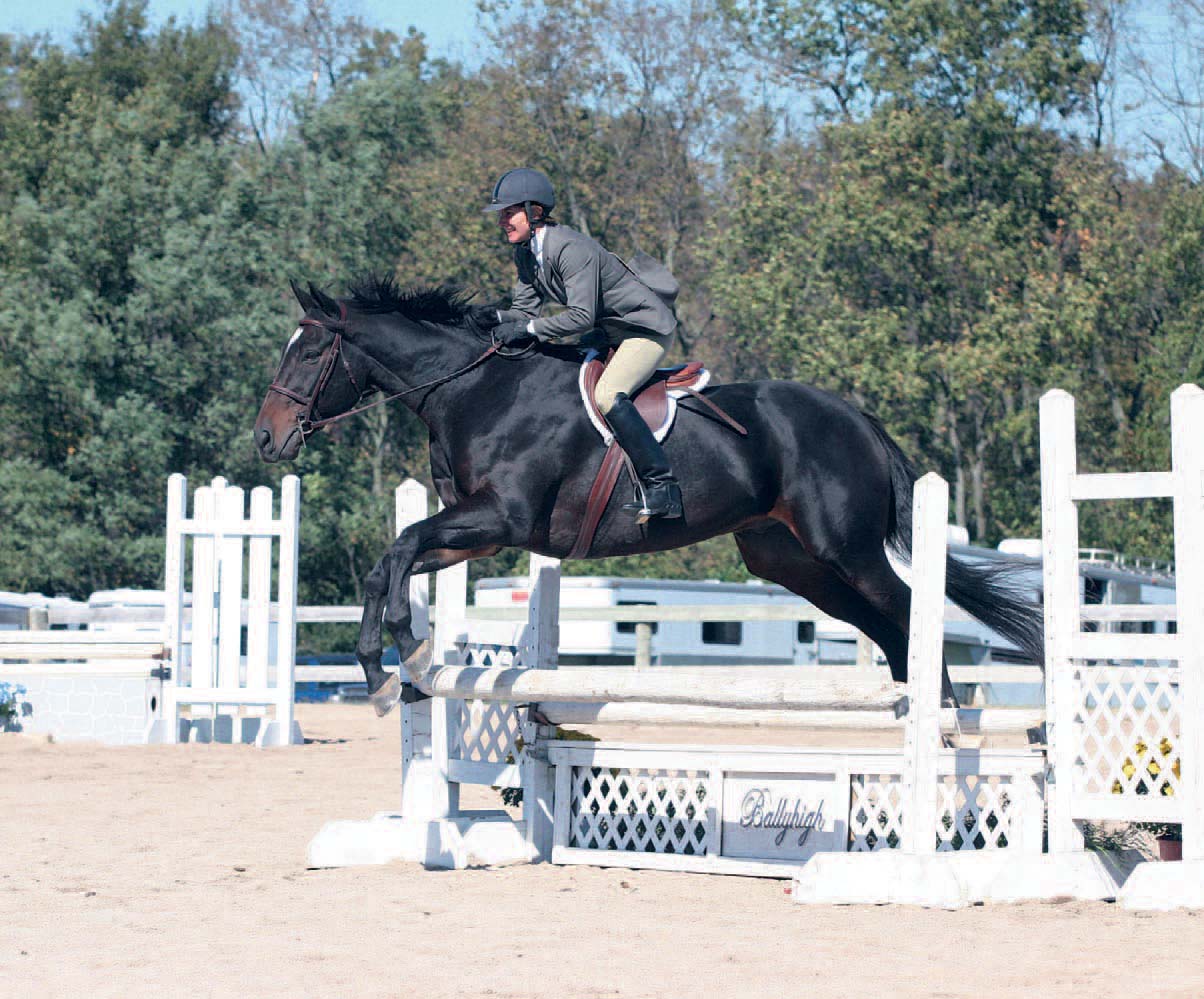
Oxers such as this one test a horse and rider’s ability to jump a wide distance.
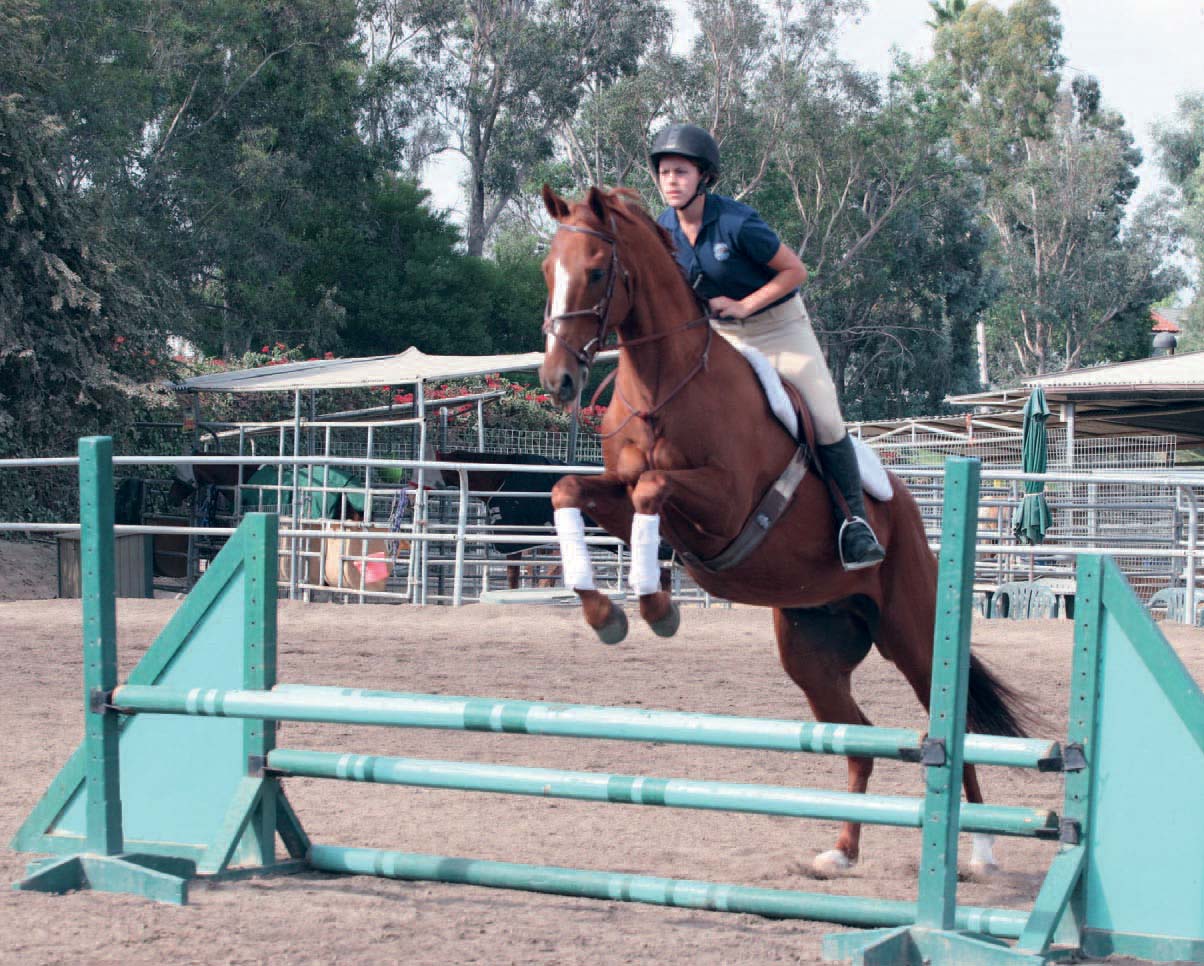
This horse is taking off from a good spot—neither long nor deep—which is especially important when jumping oxers.
Keeping the Flow
Horses should never be quick off the ground when jumping hunter fences. This expression describes a horse that comes to the jump steadily and then, at the moment of takeoff, surges forward and snaps off the ground to get over the jump. The danger here is not only a break in the flow of the ride but also that the horse will have stopped thinking about his technique and will hang his legs and pull rails. Horses that jump like this aren’t “patting” the ground on the approach. When a horse pats the ground, he takes the time to come back on his hocks, pick up the front end, and jump. A rider who doesn’t trust her horse can create this problem of failing to pat. Because she lacks confidence or is unsure when the horse will leave the ground, she adds leg at the base of the jump. This is one of the big mistakes that can ruin a horse’s jumping style or technique. The imperative in hunters is not to just get over the fence but to get over with style. A good hunter rider will wait and add the leg when it’s needed. If the horse is flowing and on a nice length of stride, just be quiet and stay still.
Riding the Course
In simplest terms, a hunter course is a series of lines and turns with jumps in the way. It’s a flatwork exercise with obstacles. People often forget to pay attention to the flatwork and the basic dressage that is necessary to ride a hunter course well. The problem with focusing on the jumps alone is that you will fail to ride a straight line after an obstacle. You should also consider riding into your corners, with proper bend and on the correct lead. If not, you will ruin your approach to the next jump. When studying the course, take into account where your lead changes will occur. Horses tend to be left or right-handed, so some will choose which lead they like to land on. If your horse prefers to land on the left, think about jumping out of the line, continuing on, taking your lead change, and making the turn. A smoothly flowing, visually appealing, enjoyable round should be your goal.

A pair jumps a combination in a hunter course.